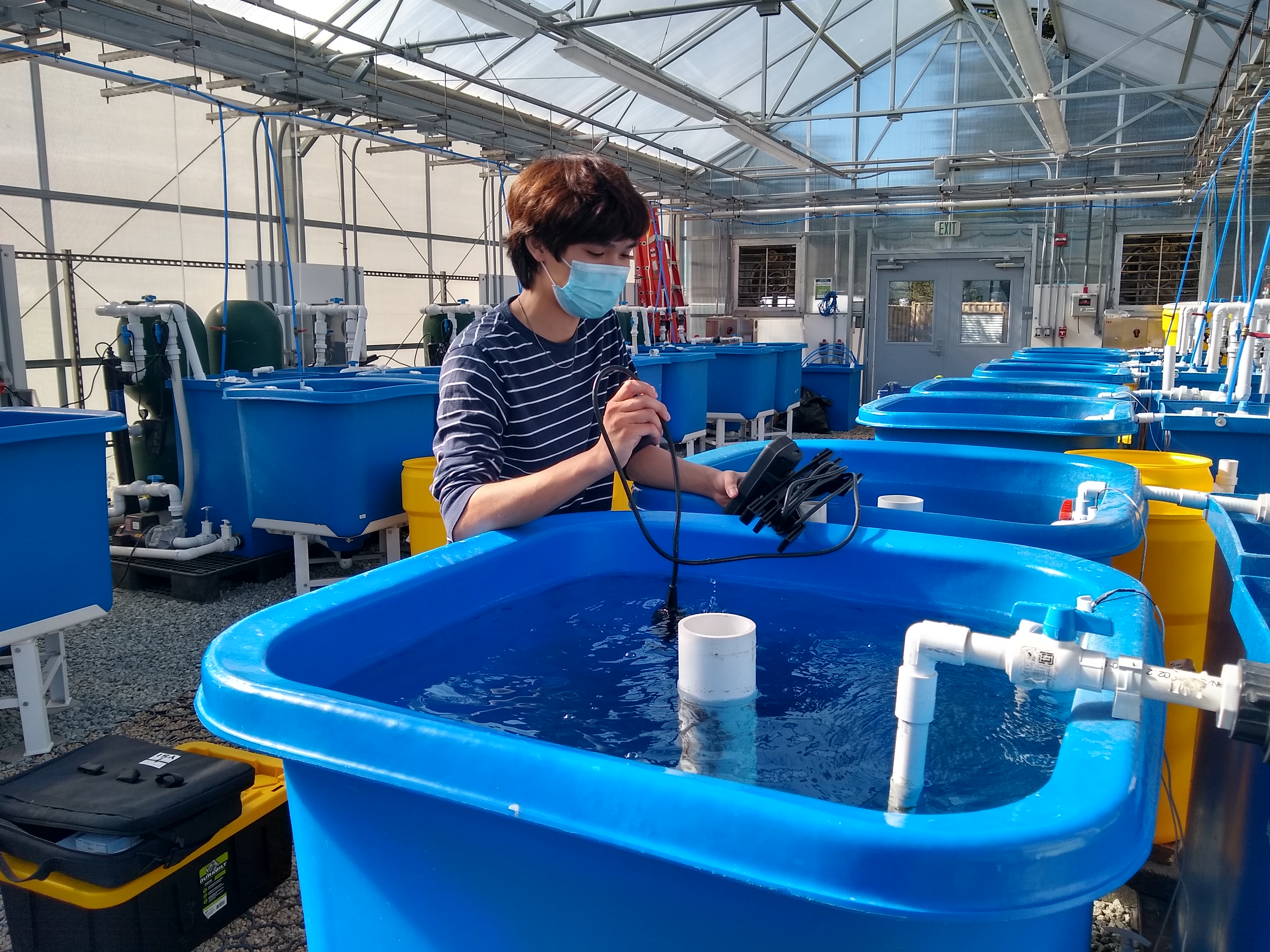If you are using wild fish to create diets for farmed fish, then the farmed fish is not as sustainable as they could be.
One of the biggest environmental challenges with aquaculture is creating fish feed that is sustainable. Current aquaculture feeds are over-reliant on ocean-derived fishmeal and fish oil—using wild fish to feed farmed fish. As the demand for farmed fish continues to grow, there is increasing focus on the sustainability of feed used in aquaculture production.

At the University of California Santa Cruz, Pallab Sarker and his team have spent the last year working on this problem as part of a California Sea Grant-funded research project. Their goal is to develop a fish feed that doesn’t rely on wild fish, but instead uses algae, waste products, or other leftovers from industry. Although the project has had some delays—from COVID-19 to the catastrophic CZU Lightning Complex Fire that had devastating impacts on the Santa Cruz region—the team is pushing through and are continuing to meet challenges head-on.
They sent us this update on how their project is going:
The Fish-Free Aquafeed Project aims to improve the sustainability of trout production, while lowering the cost of feeding trout and potentially improving the nutrition values of farmed trout. The outcome will directly contribute to more environmentally sound diets with no fishmeal and fish oil, and economically sustainable use of under-utilized resources. Not only will this improve sustainability of the fish, the team hopes the new types of fish feed will directly benefit aquaculture operations, public hatcheries, microalgae operations, and feed mills.
One unexpected challenge has been sourcing the hatchery-raised suitable size of rainbow trout for experiments. COVID-19 has slowed down hatcheries in California, and commercial producers are also understandably behind. Sarker is working with California Sea Grant aquaculture extension specialists to try to source these important fish for the study.

Though the trout delivery has been delayed, the team is making strides in the fish-free feed in the lab. The team is taking a deep dive into under-utilized co-products, or waste products, from industry. In one example, the team is studying under-utilized protein-rich microalga, Nannochloropsis oculata, that are available in large quantities as left-over co-products from human nutritional and biodiesel production. Instead of seeing this nutrient-rich microalgae as waste, the team hopes to study, and ultimately transform it into aquafeed.
“The co-products are still under-utilized (not market price) and this ignores the fact that algal co-products may be a valuable raw material, and more effective incorporation of these co-products with less production cost into aquafeeds would make use of valuable resources that are often discarded as waste,” said Sarker.
There are still many questions to ask and answer when utilizing microalgal co-products to feed rainbow trout. And once the fish arrive, determining the blend of co-products and additional nutrients that optimize digestibility and growth performance of rainbow trout in a fish farm environment.
Despite challenges Sarker is still working to inspire the next generation of scientists, “I am optimistic and looking forward to involving UC Santa Cruz students in this research, we just got special permission from the university to safely engage the student in our research (under research recovery plan) by maintaining social distancing protocols, which also limit the number of people who can be in the lab at a given time. I am hoping to bring students to visit the facility, where they could gain practical experience with collecting research data and caring for fish under this project.”
Learn more about the Fish-Free Aquafeed project here.



